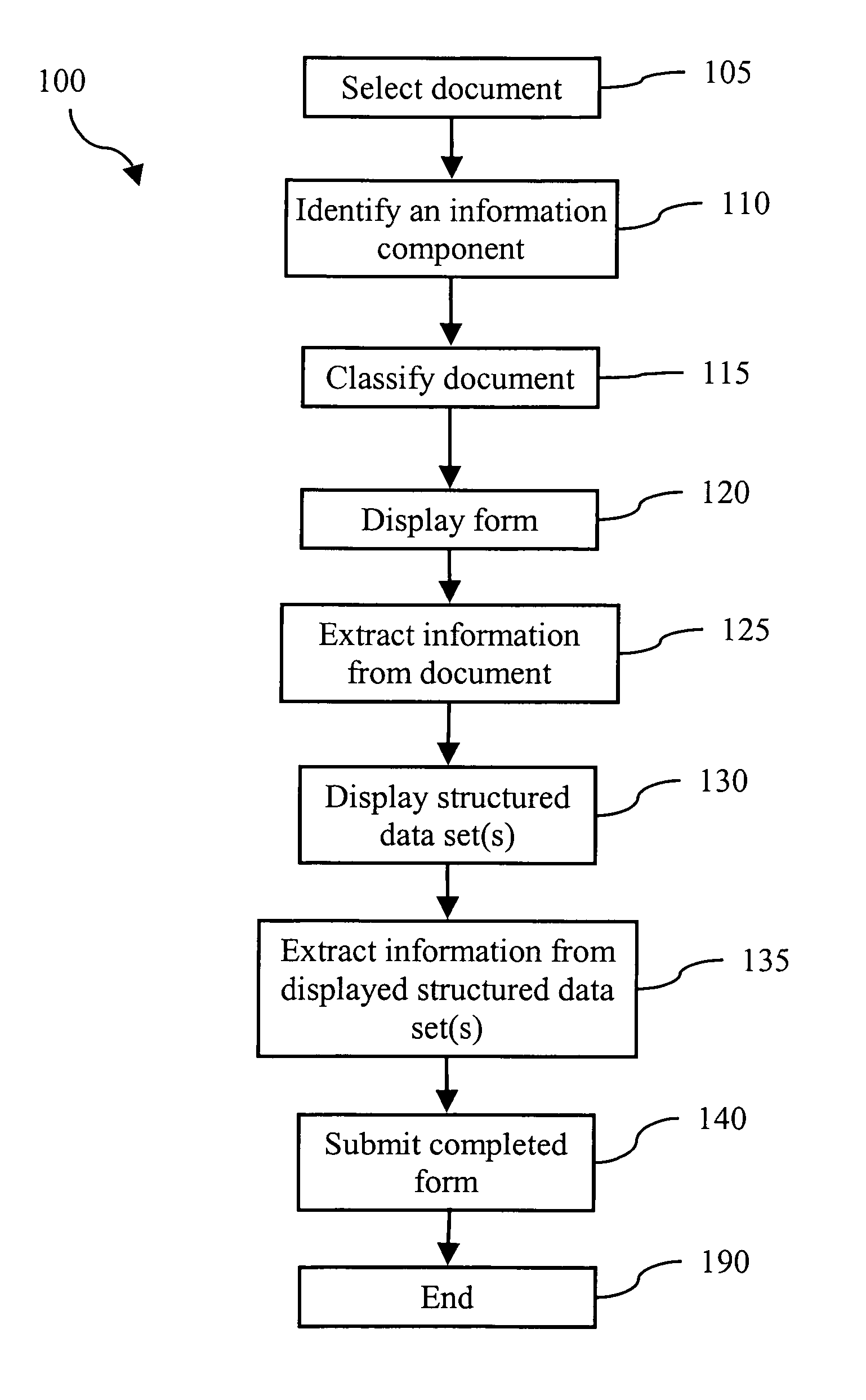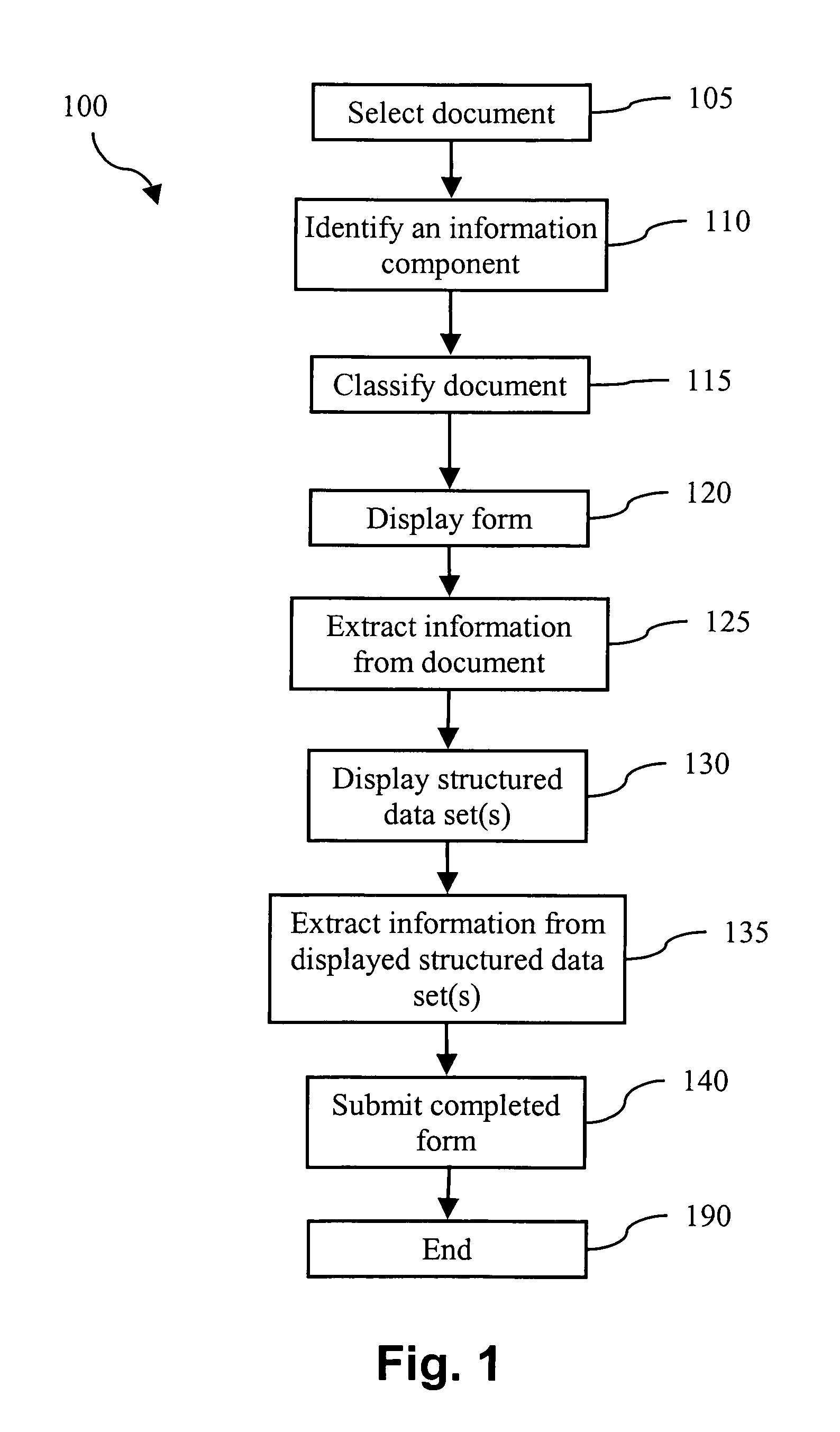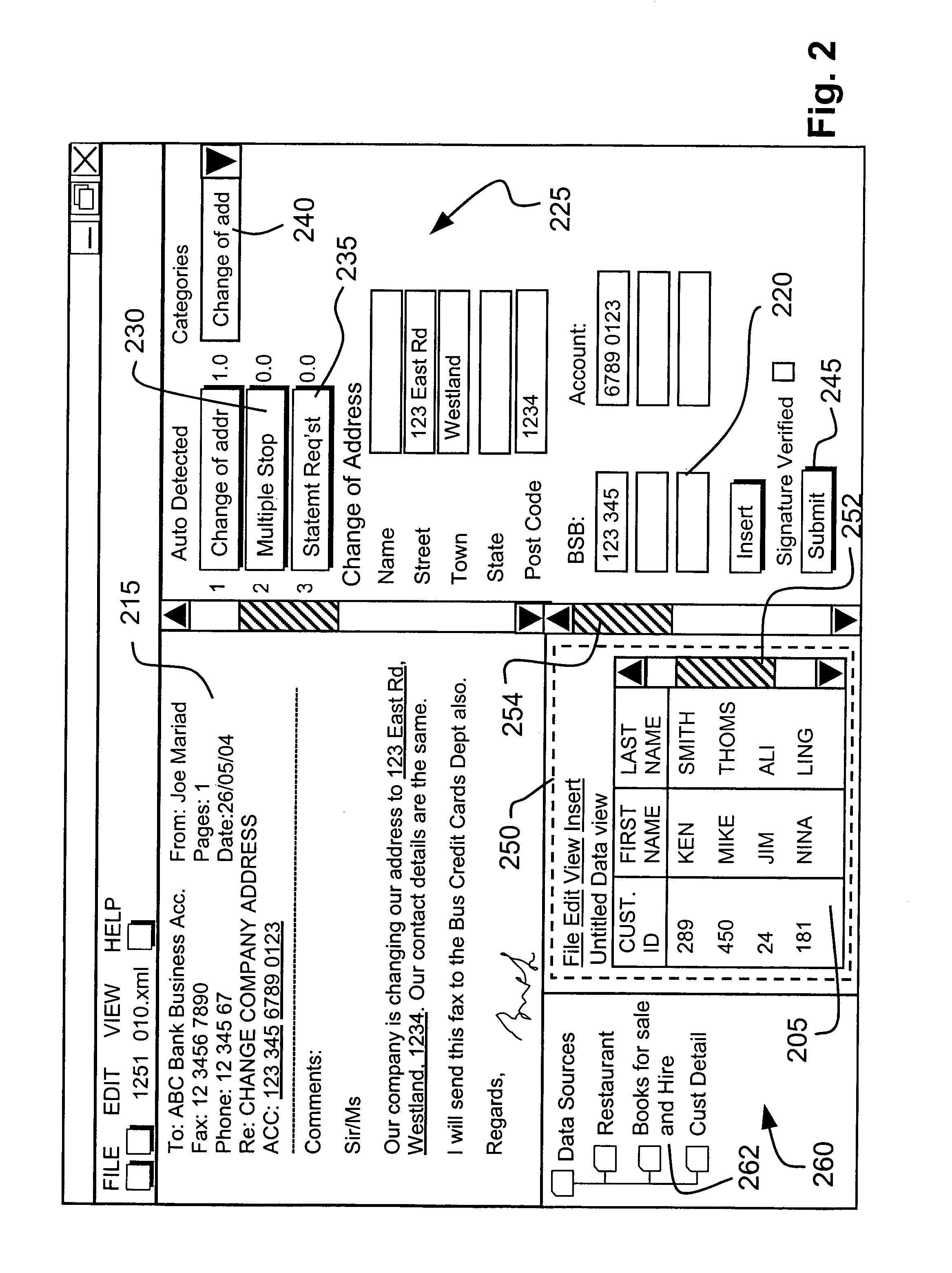Method of learning associations between documents and data sets
a data set and document technology, applied in the field of extracting data from documents, can solve the problems of low confidence level of ocr for a data field, time-consuming processing of these documents, and insufficient corporate workplace testing of technology to be adopted by many players
- Summary
- Abstract
- Description
- Claims
- Application Information
AI Technical Summary
Benefits of technology
Problems solved by technology
Method used
Image
Examples
Embodiment Construction
[0096] The arrangements described herein are well suited for the extraction of information from scanned unstructured documents such as letters, memos and faxes, although the methods are not limited to the processing of unstructured documents.
[0097] In unstructured documents, also known as free-form documents, the layout and content of the document are not fixed and may vary significantly for each document of a particular category, or pertaining to a particular task such as changing the address of a bank account. Nearly all letters have some elements of predefined structure, for example a date at the top of the letter, a signature at the end of the letter, and a standard opening such as “Dear Madam”. However, such minimal elements of predefined structure are not sufficient to qualify a document as structured.
[0098] Structured documents typically have a regular and hence predictable structure, and for this reason are often referred to as forms. In a structured document, most or all ...
PUM
 Login to View More
Login to View More Abstract
Description
Claims
Application Information
 Login to View More
Login to View More - R&D
- Intellectual Property
- Life Sciences
- Materials
- Tech Scout
- Unparalleled Data Quality
- Higher Quality Content
- 60% Fewer Hallucinations
Browse by: Latest US Patents, China's latest patents, Technical Efficacy Thesaurus, Application Domain, Technology Topic, Popular Technical Reports.
© 2025 PatSnap. All rights reserved.Legal|Privacy policy|Modern Slavery Act Transparency Statement|Sitemap|About US| Contact US: help@patsnap.com



